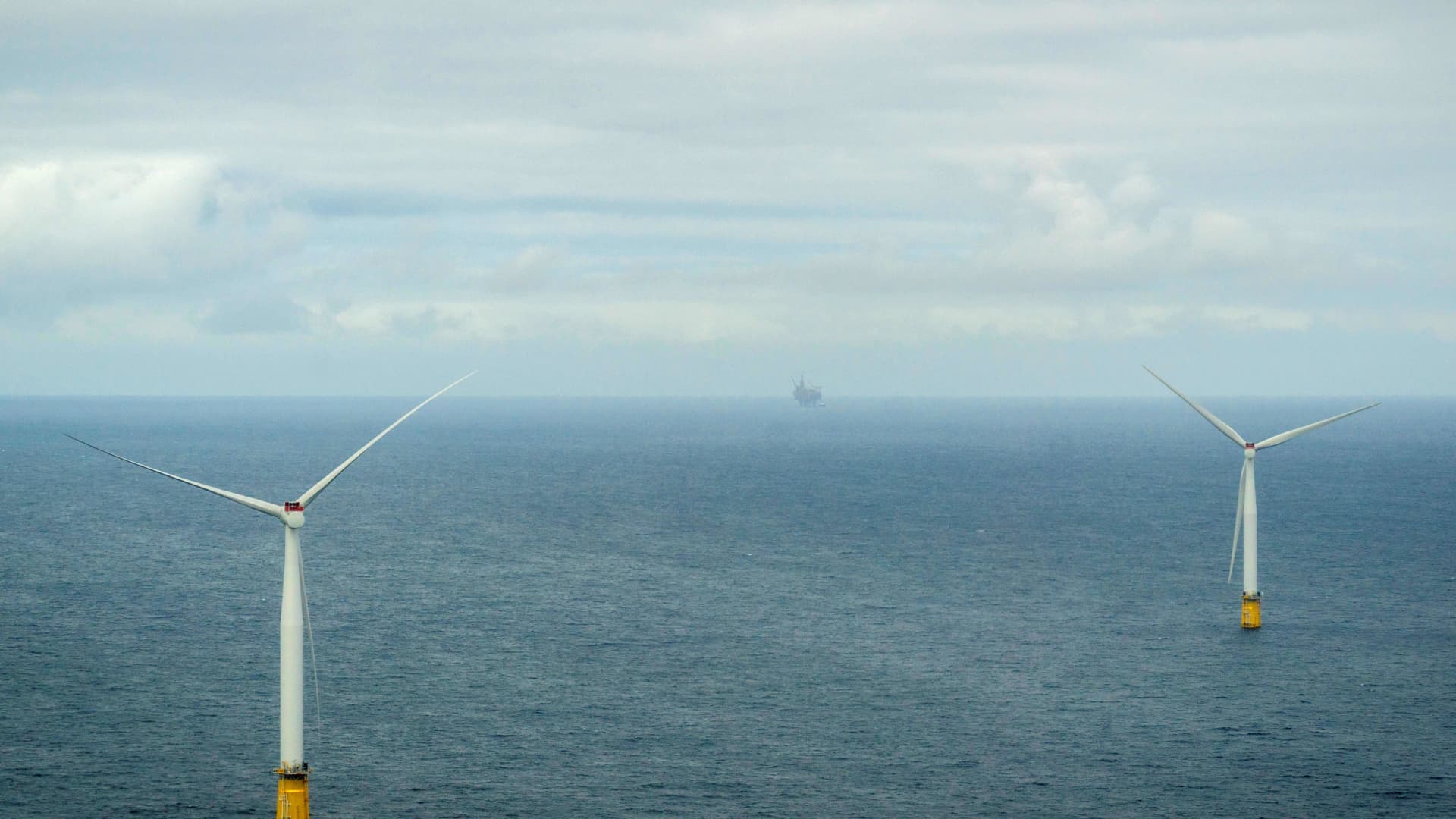A facility described as “the world’s largest floating offshore wind farm” was officially opened by Crown Prince Haakon of Norway on Wednesday, marking the culmination of a major renewable energy project years in the making.
Located around 140 kilometers (86.9 miles) off the coast of Norway in depths ranging from 260 to 300 meters, Hywind Tampen uses 11 turbines. The wind farm produced its first power in Nov. 2022 and became fully operational this month.
While wind is a renewable energy source, Hywind Tampen helps power operations at oil and gas fields, the idea being that it will cut these sites’ carbon dioxide emissions in the process.
“Hywind Tampen has a system capacity of 88 MW and is expected to cover about 35 per cent of the annual need for electricity on the five platforms Snorre A and B and Gullfaks A, B and C,” Norwegian energy firm Equinor said.
Floating offshore wind turbines are different from fixed-bottom offshore wind turbines, which are rooted to the seabed. One advantage of floating turbines is that they can be installed in far deeper waters than fixed-bottom ones.
In recent years a range of companies and major economies like the U.S. have laid out goals to ramp up floating wind installations.
Equinor, a major player in the fossil fuel industry, describes the turbines at Hywind Tampen as being “mounted on floating concrete structures with a common anchoring system.”
Alongside Equinor, partners in the Hywind Tampen project include Vår Energi, INPEX Idemitsu, Petoro, Wintershall Dea and OMV.
The project off Norway’s coast marks Equinor’s latest move in the floating wind sector. Back in 2017, it started operations at Hywind Scotland, a five-turbine, 30 MW facility it calls the planet’s first floating wind farm.
“With Hywind Tampen, we have shown that we can plan, build and commission a large, floating offshore wind farm in the North Sea,” Equinor’s Siri Kindem, who heads up the firm’s renewables business in Norway, said in a statement.
“We will use the experience and learning from this project to become even better,” she added. “We will build bigger, reduce costs and build a new industry on the shoulders of the oil and gas industry.”
Powering the oil and gas industry
The use of a floating wind farm to help power the fossil fuel industry is likely to spark significant debate at a time when discussions about climate change and the environment are at the front and center of many people’s minds.
This is because fossil fuels’ effect on the environment is considerable. The United Nations says that, since the 19th century, “human activities have been the main driver of climate change, primarily due to burning fossil fuels like coal, oil and gas.”
“Burning fossil fuels generates greenhouse gas emissions that act like a blanket wrapped around the Earth, trapping the sun’s heat and raising temperatures,” it adds.
The stakes are high. Speaking at the COP27 climate change summit in Sharm el-Sheikh, Egypt, last year, the U.N. Secretary General issued a stark warning to attendees.
“We are in the fight of our lives, and we are losing,” Antonio Guterres said.
“Greenhouse gas emissions keep growing, global temperatures keep rising, and our planet is fast approaching tipping points that will make climate chaos irreversible.”
